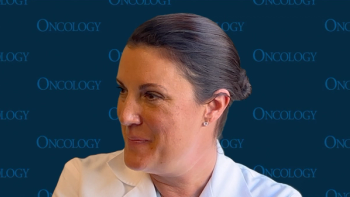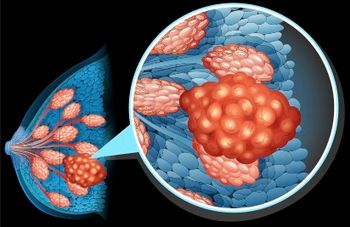
Older DCIS Patients Have Low Rates of Tamoxifen, AI Usage
The initiation of and adherence to tamoxifen or aromatase inhibitors (AIs) such as anastrozole is low among older women with estrogen receptor-positive ductal carcinoma in situ.
The initiation of and adherence to tamoxifen or aromatase inhibitors (AIs) such as anastrozole is low among older women with estrogen receptor (ER)-positive ductal carcinoma in situ (DCIS), according to a new analysis.
“Although tamoxifen and AIs can markedly reduce the risk of invasive breast cancer, their use among ER-positive DCIS patients remains low,” wrote study authors led by Hui Zhao, PhD, of the University of Texas MD Anderson Cancer Center in Houston. “It is important to evaluate adherence among older women to determine whether continued treatment, the current standard of care used to reduce the risk of DCIS progressing to invasive disease, is being appropriately given to this patient population.”
The new study included 2,871 women with ER-positive DCIS diagnosed between 2007 and 2011 and included in the Surveillance, Epidemiology, and End Results (SEER) and Texas Cancer Registry databases. All women were aged 66 to 85 years. The results were
The median age in the full cohort was 73.3 years. Among all women, tamoxifen or AI use was initiated by 1,297 women (45.2%) within 1 year of diagnosis; 72% used tamoxifen, and 24% used an AI, while 4% switched between the two options. The median interval between diagnosis and first prescription was 3 months.
Users of the medications had a median age of 73 years, while non-users had a median age of 75 years. Those women who underwent a lumpectomy followed by radiation were more likely to initiate treatment (54.6%) compared with those treated with lumpectomy only (32.9%) or mastectomy (33.6%). There were geographic differences in medication use, with higher rates in Texas, Louisiana, and several other states and lower rates in California, Washington, and New Mexico.
Hispanic (55.6%) and black patients (51.6%) were more likely than white patients (44.1%) to initiate therapy (P = .0003). Other factors significantly associated with treatment initiation and adherence included education level, marital status, and income level.
Treatment adherence declined over time. In the first year of treatment the adherence rate was 67%, and this decreased to 50% in the second to fourth treatment years, and to 30% in the fifth year from treatment initiation.
“The low rate of use may be attributable to adverse events and the excellent prognosis for DCIS patients,” the authors wrote, adding that further studies should be done to evaluate specific reasons for low uptake and adherence. “Our study highlights the need to identify biomarkers that can identify patients at high risk for invasive recurrence to maximize the preventive effect and eliminate unnecessary harm in women with a low risk of breast cancer recurrence.”
Newsletter
Stay up to date on recent advances in the multidisciplinary approach to cancer.


















































































